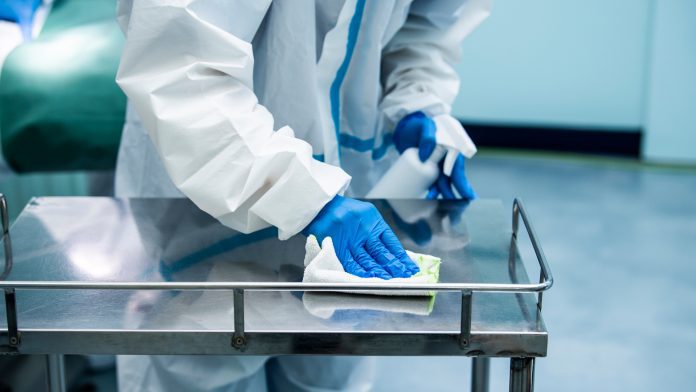
A global pilot study provides the first review of the strengths and challenges associated with healthcare environmental hygiene (HEH).
Healthcare environmental hygiene comprises cleaning all surfaces in hospital rooms and plays a crucial role in infection prevention and control. For this practice to be effective, it relies on adequate cleaning products and supplies, best practices-based protocols, training, education and quality control, and the institutional safety climate. However, there is a range of challenges associated with healthcare environmental hygiene, highlighted in this new report.
The first of its kind review provides vital evidence to enhance an in-development self-assessment tool that will help facilities benchmark and improve healthcare environmental hygiene.
Healthcare environmental hygiene: a new improvement strategy
A team from the University of Geneva Hospitals and Faculty of Medicine designed a pilot study to evaluate the strengths and challenges of healthcare environmental hygiene global programmes. The study assessed a preliminary version of the Healthcare Environmental Hygiene Self-Assessment Framework (HEHSAF) which consists of a 39-question tool to support facilities’ healthcare environmental hygiene programmes.
The researchers collected evidence from 51 healthcare facilities in 35 countries.
98% (50 out of 51) of the participating healthcare facilities required improvement in some or all of the five components of the multimodal IPC improvement strategy, independent of income level. Other key findings included:
- 71% of respondents felt that their facility gave enough importance to HEH and 47% felt that the budget allocated for cleaning and disinfection was adequate.
- 67% of healthcare facilities reported that necessary healthcare environmental hygiene products and supplies were always available, 27% said they were sometimes available and 6% said they were never or rarely available. Among the 90% of HCFs that reported healthcare environmental hygiene equipment and supplies were available, 16% could still not perform adequate sterilization because the equipment was not in good working condition.
- Just over 50% of healthcare facilities reported that their protocols were based on best practices and updated regularly.
- Only 22% of HCFs provided or required (if the staff was outsourced) comprehensive formal healthcare environmental hygiene training upon hiring; 28% did not provide or require any formal training at all.
The study highlights key changes
“We were surprised to find that 98% of the facilities participating in our survey were majorly lacking in one or more of the World Health Organization’s multimodal improvement strategies for infection prevention and control practices,” said Alexandra Peters, PhD, Can, University of Geneva, and first author on the published study. “This survey suggests that challenges with key components of HEH, including staff education and training, workplace culture, and access to adequate products and equipment, remain ubiquitous regardless of geography or income level. These results reinforce the need for a self-assessment tool to help HCFs worldwide identify HEH challenges and necessary resources.”
“This study highlights environmental hygiene needs that are similar to those we identified more than 25 years ago for hand hygiene promotion at the time we introduced alcohol-based hand gels in hospitals,” said Professor Didier Pittet, who is the chair of the Clean Hospitals Initiative, leading the WHO Hand Hygiene promotion initiative “SaveLives: CleanYourHands”, and lead senior author of the study published today.
“These findings provide the global IPC community with a baseline for HEH assessment, and should encourage focus, improvement, and investment in HEH globally to reduce healthcare-associated infections and their implications,” concluded Linda Dickey, RN, MPH, CIC, FAPIC, and 2022 APIC president. “The final HEHSAF will be an invaluable tool to support this effort.”
The research was published in the American Journal of Infection Control (AJIC)
























